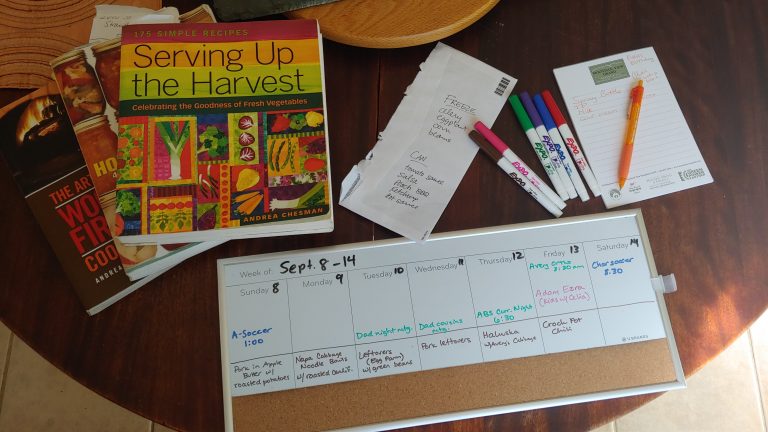This post may contain affiliate links.
If you’re skeptical about the quality and transparency of store-bought chicken, you’re not alone. Many people, including myself, question the unclear labeling, unnaturally large cuts, and the excess water in the packaging.
If you’ve had all these thoughts and are willing to get up close and personal with the harvesting process, growing meat birds is for you.
Raising meat chickens is a natural extension if you already keep egg-laying hens, though the approach is slightly different. This guide will cover how to select and raise meat birds effectively and provide resources for the harvesting process once you decide to take this step.

Choosing a Breed
When growing chickens for meat, you have quite a few breeds to choose from. Red Rangers, for example, grow slower and smaller, but their flavor is absolutely mouthwatering. They are also preferable for a free-range situation.
Cornish Cross grow the largest and fastest and are more feed efficient. They also do well in a more confined situation.
There are a ton of other breeds to choose from, and don’t overlook the dual purpose layers either! Many hatcheries even sell bundles of roosters from egg laying breeds because they also make great eating.

Getting Started
We start our meat chicken like any other chick—in a brooder with lots of feed, water, and heat. For the first two weeks, we feed a chick starter crumble, followed by a meat bird crumble until harvest.
Feed Variations
Because these meat chickens grow so fast, they’re prone to horrible leg problems. The breast muscle is growing faster than their little legs can support. We address this issue by supplementing their crumbs with greens 1-2 times weekly. We chop up romaine
These greens are high in calcium, and those little legs need it to support their weight. Just make sure you pull the crumble when feeding the greens because they prefer it. We find that with this feeding schedule, we avoid most, if not all, leg problems.
Exercise
Another thing to consider is that meat birds are major couch potatoes. If they can sit and be pampered, they will. Keep moving their feed and water around their pen. Make them get off their little feathered tushes and walk…even if it’s just to the feeder. This will also help avoid leg problems by giving them a little exercise.
They’re pretty slow for chickens as well. You’ll have no problem catching them up if needed. Of course, this makes for a painfully slow trip if they escape their pen and you must herd them back in.

Preparing to Harvest
At six (6) weeks of age, you want to start weighing your meat chickens to see if they are ready to be harvested. We harvest our Cornish Cross when they are approximately 7-8 pounds (during processing, you could lose 1 -2 pounds of weight).
The easiest way I have found to weigh them is by using a hanging game scale. A canvas or light fabric tote bag is the perfect size for a chicken. I throw the bag over their head and pick it up. These birds are quite hardy and can tolerate a little tussle in the bag without any problem. Pop the bag on the scale hook, and you’re good to go.
The roosters of the lot will be ready right around six weeks of age. You can harvest the hens simultaneously if you want a smaller chicken. I keep the hens back until 8 weeks, so all of my birds are about the same size in the freezer.
Breaking up harvest days also makes it easier on you because processing each chicken from start to finish can take about 45 minutes.
Harvesting
Harvesting or processing your meat chickens can take one or a few days, depending on how many you are processing and whether you choose to process them all at once.
While I do not cover the whole process here, there are some great resources out there to learn about the harvesting process, including this article by Melissa Norris on How to Butcher Chickens at Home and this YouTube video by High Desert Hollow on How to Process a Turkey from Start to Finish (I use the same process with my chickens).
Enjoy the Rewards
Processing your own meat birds can offer quite a few benefits. We harvested a flock of 15 birds – 8 roosters over 6 weeks and 7 hens for 8 weeks.
We fed 200 pounds of feed (50 pounds of chick starter and 150 pounds of meat bird crumble). The average price was $7.50 per bird, with each bird weighing around 5-6 pounds.
That’s actually quite a savings since my local grocery store carries whole pasture-raised birds for $4.99 a pound!
Beyond the cost savings, knowing how my food lived and what it ate is also priceless.
Katie Ostrander hails from the Diamond B Ranch in San Diego, CA. Alongside her husband they are raising cattle, turkeys, chickens, and cowgirls. Katie is an active Agvocate spreading her passion for ranching through numerous speaking engagements and classes. Her ranch is founded on the principal of know your farmer, know your food.She is also a member of her local chapters of California Women for Agriculture and Cattlewomens Associations. Keep up with Katie and her herd at www.DiamondB.org or instagram at @DiamondB_Ranch.Katie










Good info! I’ve been raising my own meat chickens and turkeys for about 7 years and can’t imagine going back to store bought. Thanks for sharing!
That’s awesome Lisa! What breeds are you raising?
Wow this is great info, Katie. We thought about raising hens to keep for eggs once we do move out of current home and onto a small farm in a few years. Your post is golden! Thanks for linking up at #OMHGWW and hope to see you next week!